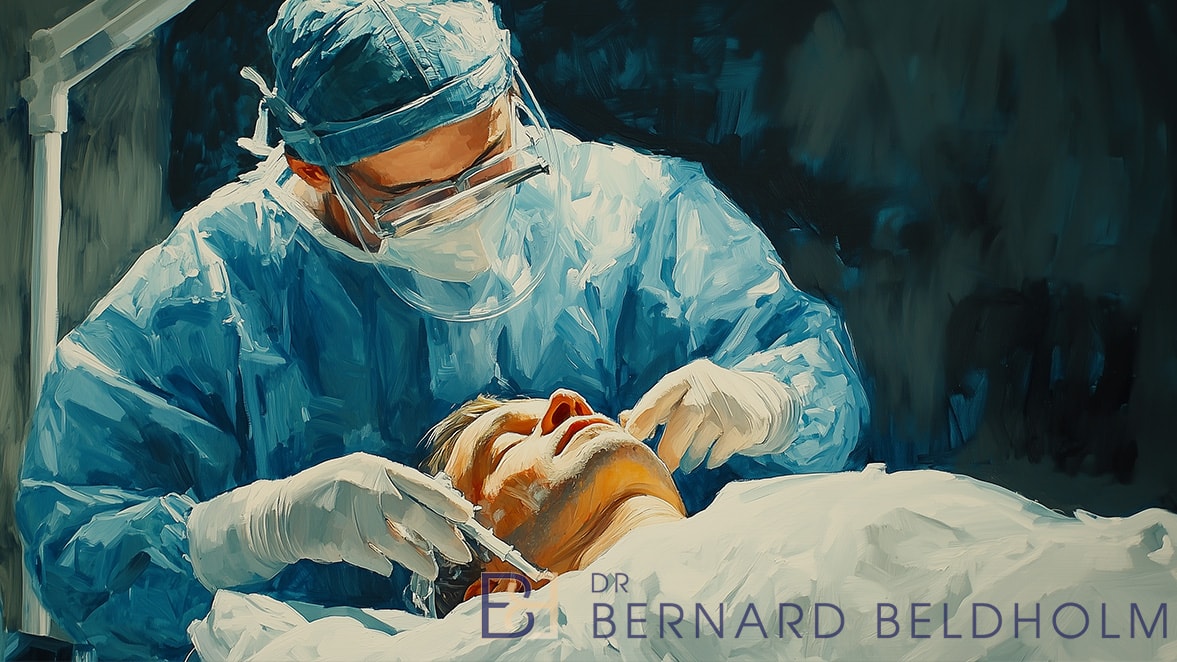Umbilicus removal is a surgical procedure to remove the belly button, often done for medical conditions or aesthetic reasons. If you’ve been curious about why someone would undergo this surgery, and what it involves, this article breaks down everything you need to know, from reasons and procedures to benefits and recovery.
Key Takeaways
- Umbilicus removal can be a necessary procedure for medical reasons.
- The surgery involves careful techniques to remove the umbilicus and reconstruct a new one, often performed under anaesthesia and can be combined with other procedures like abdominoplasty.
- Recovery is typically straightforward, but proper care and follow-up are important to avoid complications; alternatives like umbilicoplasty exist for those wanting less invasive options.
Reasons for Umbilicus Removal
Book your appointment online now
Umbilicus removal is not just about aesthetics; there are several compelling medical reasons why someone might undergo this procedure. For instance, conditions like diastasis recti, which involve the tearing of abdominal muscles and displacement of the umbilicus (belly button/navel), can make everyday activities painful and challenging. Additionally, umbilical hernias, where part of the intestine protrudes through the abdominal wall, may necessitate surgical intervention when conservative treatments fail.
Beyond medical issues, the appearance of the belly button can significantly impact a person’s mental and emotional well-being. An abnormal or unsightly umbilicus can lead to feelings of distress, grief, or even depression. Some individuals might have an “outie” umbilicus or scarring from previous abdominal surgeries, which they find aesthetically displeasing. For these reasons, many opt for umbilicus removal.
Infections and other health concerns also factor significantly. Painful conditions such as cysts, scar tissue from previous surgeries, or recurrent infections in the umbilicus area can make daily living unmanageable. Signs of an umbilical infection, like enlargement, pain on palpation, and purulent discharge, can be alarming and often lead individuals to seek surgical solutions.
Thus, umbilical cord removal can be a holistic approach towards wellness.
The Umbilicus Removal Procedure

Disclaimer: Operation performed by Dr Bernard Beldholm. Adult content, surgery has risks; individual results vary, seek 2nd opinion. Please see the full disclaimer.
What happens during an umbilicus removal procedure? The surgery itself involves several meticulous steps to ensure positive outcomes. Generally, the process begins with the excision of the hernia sac, if one is present, and careful attention to reconstructing a new umbilicus. This might sound daunting, but multiple surgical techniques are available, tailored to each individual’s needs.
The type of anesthesia used is a crucial part of the procedure. Depending on the complexity of the case, the abdominal surgery can be performed under local or general anesthesia. Once the patient is prepped, the surgeon makes an incision, carefully excising the hernia sac at the scarred edge. Techniques such as the inverted U-shaped flap are often employed, especially for umbilical hernia repair, surgical procedures, and scar revision.
The final stage involves the reconstruction of the new umbilicus. The surgeon has to carefully recreate the umbilicus in a way that is physically and aesthetically pleasing. This meticulous attention to detail contributes to a satisfactory result for the patient.
Benefits of Umbilicus Removal

Download our short guide: “11 Important abdominoplasty techniques that you need to know about”
Umbilicus removal can provide immense relief from recurrent infections that can plague the umbilicus area. Chronic infections are not just painful but can also lead to other complications if left untreated. Removing the umbilicus often results in increased comfort and fewer infections.
Risks and Complications
As with any surgical procedure, umbilicus removal comes with its own set of risks and complications. Common risks include scarring, dissatisfaction with the appearance, adverse reactions to anesthesia, and more serious issues like blood clots and pneumonia. Understanding these potential complications is crucial, so patients should discuss them thoroughly with their surgeon prior to the procedure.
After: Common risks associated with umbilicus removal include:
- Scarring
- Dissatisfaction with the appearance
- Adverse reactions to anaesthesia
- Blood clots
- Pneumonia
Patients must be aware of these potential complications and discuss them thoroughly with their surgeon in advance.
Specific complications related to the umbilicus can also arise. Issues like malposition, stenosis, ischemia, and necrosis are not uncommon and can significantly affect the surgical outcome. Infections are another serious concern, with conditions such as omphalophlebitis, omphaloarteritis, and abscessation being potential risks. These infections can be particularly dangerous and may necessitate further surgical intervention.
To minimise these risks, it’s essential to follow carefully planned procedures and delicate surgical techniques. Despite the best efforts, some patients might still report aesthetic issues like flattened umbilici or an odd umbilical position. For those dissatisfied with their initial results, reconstructive surgery might be advisable.
In rare cases, the presence of embryonic remnants can lead to medical complications, underscoring the importance of thorough pre-surgical evaluations.
Recovery Process
Recovery from umbilicus removal is generally straightforward, but it requires careful attention to ensure a smooth healing process. Most patients can return home the same day as the procedure. The initial recovery period is relatively short, with many patients able to return to work within a day or two.
Maintaining cleanliness and dryness of the belly button area is crucial during the healing process. Patients should be vigilant for signs of complications such as severe bleeding, persistent pain, or symptoms of infection. It is crucial to attend regular follow-up appointments with the surgeon to monitor the healing process and promptly answer any questions.
Alternatives to Umbilicus Removal

For those not keen on completely removing their belly button, alternatives like umbilicoplasty offer a viable option. This procedure specifically targets the shape and position of the belly buttons without altering other abdominal areas. It’s particularly beneficial for individuals who have undergone significant weight loss or pregnancy and wish to maintain a normal appearance through umbilicus surgery.
The techniques used in umbilicoplasty can vary, with modern methods focusing on minimising scarring. This can be a standalone procedure or combined with other body contouring surgeries, including plastic surgery, for a more comprehensive result.
Combining umbilicoplasty with an abdominoplasty procedure can significantly reshape the umbilicus. This combination approach can provide patients with a more aesthetically pleasing midsection. Exploring these alternatives allows patients to make informed decisions about their surgical options.
Dr. Beldholm’s Final Conclusion
As a specialist surgeon, I have seen firsthand the power of umbilicus removal. This multifaceted procedure offers both medical and aesthetic benefits, making it a valuable option for many patients.
Understanding the intricacies of the procedure, the recovery process and potential risks is crucial for making informed decisions. By selecting a qualified surgeon and considering alternatives like umbilicoplasty, you can achieve your goals.
Ultimately, the goal is your well-being. Embrace the possibilities and take the first step towards a new you. Your journey to mental and physical wellness starts with the right information and professional guidance.
Frequently Asked Questions
What are the main reasons for umbilicus removal?
Umbilicus removal mainly happens for medical issues like diastasis recti and umbilical hernias, plus some folks want it for aesthetic reasons or to stop recurring infections. It’s all about what feels right for you.
How is the umbilicus removal procedure performed?
The umbilicus removal procedure typically involves cutting out the hernia sac and creating a new belly button, all while using local or general anesthesia. It often uses techniques like the inverted U-shaped flap for a tidy result.
What are the risks and complications associated with umbilicus removal?
Removing the umbilicus can lead to scarring, infection, dissatisfaction with how it looks, and potential reactions to anaesthesia. It’s important to weigh these risks before going through with the procedure.
Are there alternatives to umbilicus removal?
Umbilicoplasty is a great alternative that reshapes the umbilicus without tremoving it completely. It can even be paired with other procedures like a abdominoplasty for optimalresults.




